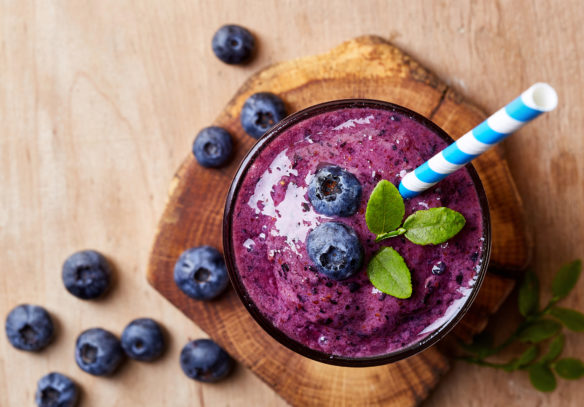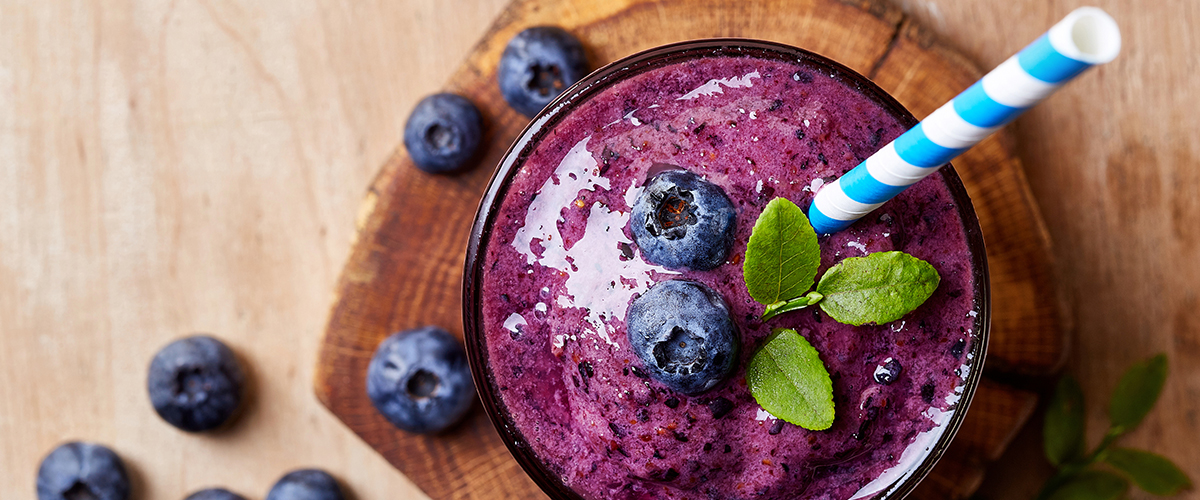We’re hearing a lot more about sugar these days, especially sugar in our diet and how much we’re consuming, or in most cases, over consuming. You might have also seen “added sugars” beginning to pop up on Nutrition Facts labels on packaged foods. The discussion surrounding added sugars is warranted—as a nation, we’re eating too much of it, and this has been linked to heart disease.

The good news is, not all sugar is unhealthy and there are some simple ways to swap out the unhealthy type if you are overdoing it. We caught up with Rachel K. Johnson, PhD, RD, Professor of Nutrition at the University of Vermont and spokesperson with the American Heart Association to help us find healthy ways to cut added sugars from our diet and to understand why this is so important.
What are the differences between added sugars and naturally-occurring sugars?
There are two different types of sugars that occur in our diet – natural and added. Naturally occurring sugars are found naturally in foods such as fruit (fructose) and milk (lactose). Added sugars are sugars or syrups that have been added to foods during preparation or processing. It’s important to differentiate the two because the added sugar in processed foods typically adds calories while providing little to no nutritional benefit. In contrast, naturally occurring sugar is typically found in foods that are packed with nutrients.
Are there limits to how much added sugars we should eat?
Yes. Currently, Americans are consuming about 22 teaspoons each day, that’s 352 calories just from added sugars. This is about two to three times the amount we at the AHA recommend as an upper limit. Our guidelines recommend women have no more than 100 calories per day of added sugars, or about 6 teaspoons, and for men, no more than 150 calories per day, or about 9 teaspoons.
Where are all the added sugars coming from?
It may surprise you to know that almost half (47%) of the added sugars in our diets comes from sugar-sweetened beverages including soda, energy and sports drinks, fruit drinks, sweetened coffee and tea, sweetened alcoholic beverages, and sweetened flavored waters. Other major food sources include candy, cookies, cakes, pastries and dairy desserts (e.g. ice cream) and sweetened ready-to-eat cereal.

Do you have any tips for cutting added sugars from our diet?
The good news is, if you think you might be eating too much sugar, there’s plenty you can do to cut back. Here are our top 6 tips to help cut down on your sugar intake.
- Cut back on the table sugar (white and brown), syrup, honey, agave and molasses you use. Cut back on the amount of sugars added to things you eat or drink regularly like cereal, pancakes, coffee or tea. Start by cutting the usual amount of sugar you add by half and wean down from there.
- Sip smarter. Cut down on regular soda, energy drinks, and other sugar sweetened beverages. Drink sparkling water, unsweetened tea, milk and 100% juice (with no added sugars), or sugar-free beverages. The best and cheapest choice is always water!
- Read food labels and choose products with the lowest amounts of added sugars. Dairy and fruit products will contain some natural sugars. Added sugars are not always listed on the Nutrition Facts panel but can be identified in the ingredients list. Syrup, molasses, agave, cane juice and fruit juice concentrate mean added sugars, as well as most ingredients ending with the letters “ose” (like sucrose and dextrose).
- Add fruit. Instead of adding sugar to foods like cereal, oatmeal and yogurt, use fresh, frozen, canned or dried fruit. Go for fruit packed in water or natural juice instead of heavy syrup. Another trick is to drain and rinse the fruit in a colander to remove excess syrup or juice.
- Reduce the amount. Try cutting the sugar called for in recipes by one-third to one-half. Often you won’t notice the difference. Instead of sugar, try extracts like almond, vanilla, orange or lemon, and spices like ginger, allspice, cinnamon or nutmeg. Or switch out sugar with unsweetened applesauce (use equal amounts).
- Change up your desserts and treats. Reach for fruit most days and limit traditional desserts and sweets to special occasions.
Note: Since everyone’s health history and nutritional needs are so different, please make sure that you talk with your doctor and a registered dietitian to get advice about the diet and exercise plan that‘s right for you.
Note: Since everyone’s health history and nutritional needs are so different, please make sure that you talk with your doctor and a registered dietitian to get advice about the diet and exercise plan that‘s right for you.

